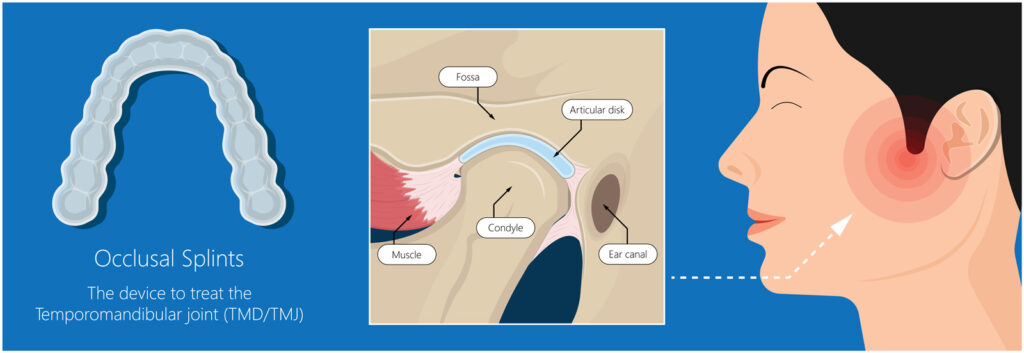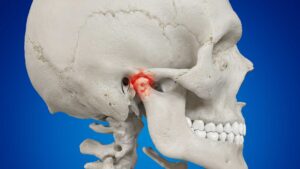
Pain Relief: Splint therapy can provide effective relief from TMJ pain by properly aligning the jaw and reducing pressure on the temporomandibular joint.
Minimally Invasive: Splint therapy is a non-surgical approach to managing TMJ pain, making it a conservative treatment option that avoids invasive procedures.
Personalized Precision Fit: Splints are typically custom-made to fit the patient’s bite and jaw alignment precisely, ensuring optimal comfort and effectiveness.
Muscle Relaxation: By repositioning the jaw, splints help relax the muscles around the jaw, reducing tension and muscle spasms that contribute to TMJ discomfort.
Reduced Jaw Clenching and Grinding: Splints can help prevent the harmful habits of teeth clenching and grinding (bruxism), which are often associated with TMJ pain. This reduces further damage to the joint and surrounding tissues.
Joint Protection: Splints act as a cushion between the upper and lower teeth, protecting the joint from excessive force and wear and tear.
Early Intervention: Splint therapy can be used early to address TMJ issues, potentially preventing the progression of the condition and the need for more invasive interventions in the future.
Easy to Wear: Once the patient becomes accustomed to wearing the splint, it becomes relatively easy to incorporate into daily routines.
Improved Bite Alignment: Repositioning splints, in particular, can help improve the alignment of the bite over time, leading to better overall oral health.
Support for Adjunctive Therapies: Splint therapy can be used in conjunction with other therapies, such as physical therapy, stress management techniques, and lifestyle changes, for a comprehensive approach to managing TMJ pain.
Reversible: Unlike surgical interventions, splint therapy is reversible. If a patient’s condition improves or if other treatments become more suitable, the splint can be discontinued without permanent changes.
Patient Education: Through the use of splints, patients can become more aware of their bite, jaw, and oral habits. This awareness can lead to better habits and improved oral health.







